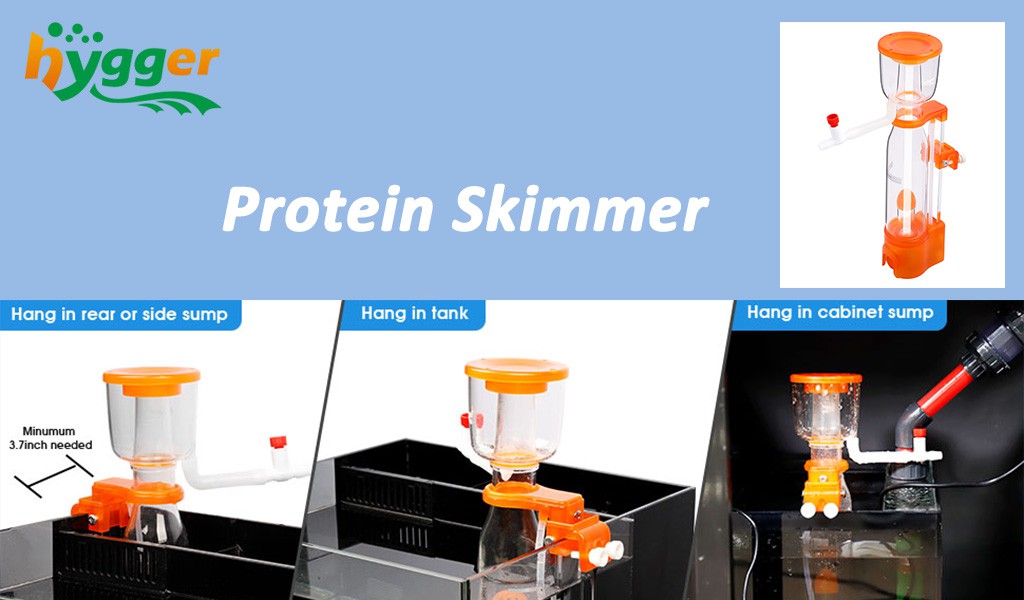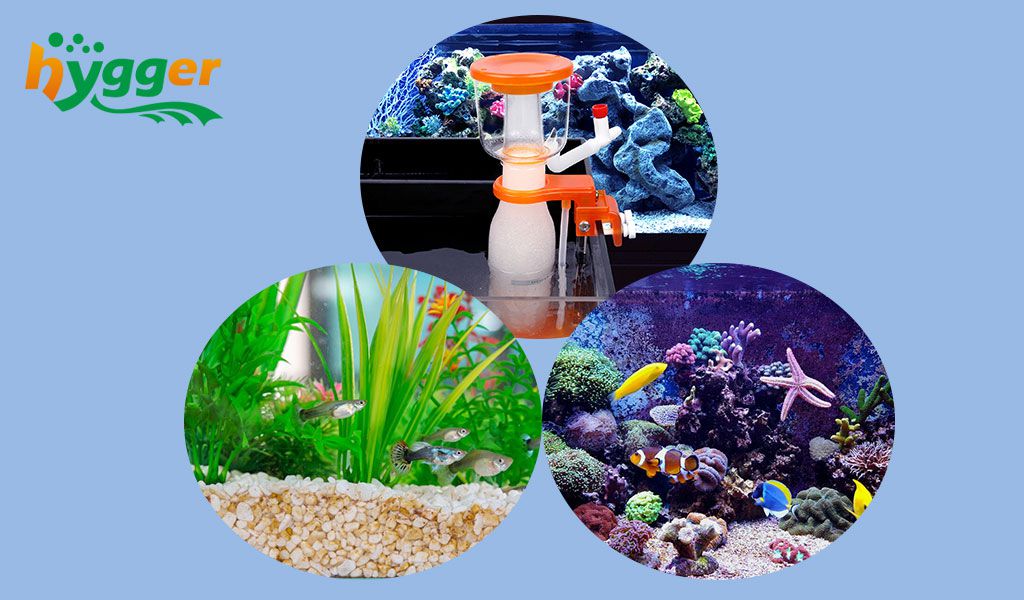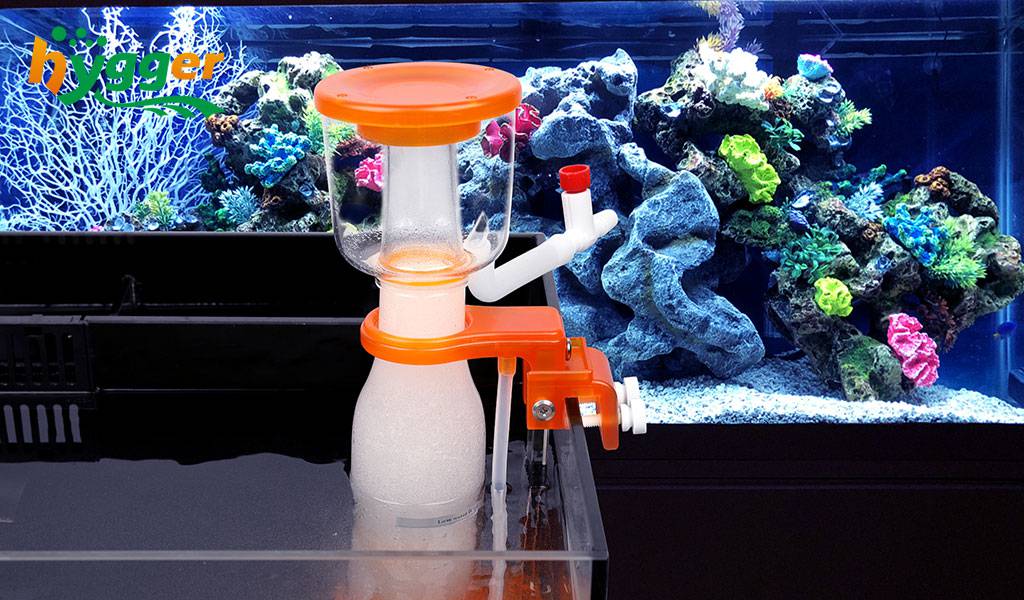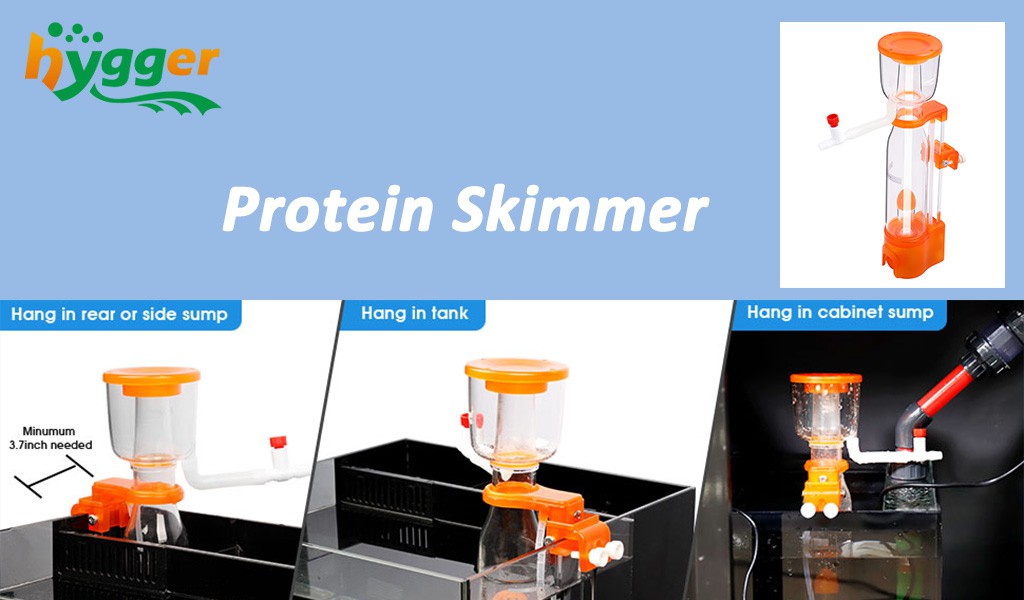Are you confused about the protein foam or oil biofilm in your tank? If so, a protein skimmer will help you out. It can remove the foam or film from your tank, plus improve the oxygen level in the meantime. Next in the article, we will discuss the protein skimmer. After reading, you will know more about the significance of protein skimmers in your aquariums. Without further ado, let’s get started.
What is a protein skimmer
A protein skimmer is one piece of aquarium equipment to remove unnecessary substances, like excessive proteins, fish feces, and uneaten food. As a result, a protein skimmer filters and purifies the aquarium water, while the skimmer also shares the responsibility for the nitrifying system. So, regarding maintaining great water quality, a great filtration system is helpful, and the same goes for a protein skimmer. Protein skimmers remove unnecessary substances by creating bubbles to attract and condense them into the collection cup. Finally, they would be expelled from the sewage discharge pipe.

Generally, a protein skimmer is composed mainly of an air intake nozzle, DC water pump, base, adjustable silencer, honeycomb head, adjustable clip, reaction chamber, air pipe, air inlet, collection cup with lid, sewage discharge pipe, discharge valve, or others.
What does a protein skimmer do
Protein skimmer in saltwater aquariums
A protein skimmer in saltwater aquariums can remove waste, lower the nitrate level, and prevent the overgrowth of algae, as well as protect aquatic pets from parasite invasion and disease infection.
Nonetheless, does a protein skimmer necessary for your saltwater tanks? It is determined by the status of the aquarium. If there are a great filtration system and clean water, a protein skimmer may not be necessary. But if the protein foam or oil films form on your water surface, adding a protein skimmer could be vital.
To conclude in this segment, we will summarize the general benefits of adding a protein skimmer in saltwater aquariums:
- Remove unnecessary substances, like waste, fish feces, and uneaten food. Hence, improve and maintain great water quality.
- Decrease the phosphate level to limit the growth of harmful algae.
- Remove the biological toxins from algae, corals, or others.
- Promote the oxygen level to some extent.
- Decrease the bad effects of carbon dioxide accumulation, plus keep a stable and ideal pH level.
- Remove oil films on the water surface.

Protein skimmer in freshwater aquariums
On the other side, a protein skimmer is not an excellent addition to freshwater aquariums. Because the water in most freshwater aquariums can not form sufficient small bubbles for protein skimmers to run effectively. Nevertheless, it can be useful for freshwater-planted aquariums. Because of the organic waste, dead or decaying leaves would be decomposed into a level oil slick on the water’s surface. In this case, a protein skimmer will help you out.
But in addition to protein skimmer, you can also deal with it by changing aquarium water regularly or adding biological filters, like activated carbon. And the latter options are lower-cost and more effective. Next, we would like to cover some benefits of using a protein skimmer in freshwater aquariums:
- Improve aeration: Protein skimmers improve aeration by shifting the water on the surface.
- Keep water clean: It can be helpful to remove excessive additives and uneaten food.
- Reduce the frequency of water changes: It makes sense in removing minuscule particles and wastes.
- Limit the damaging algae overgrowth. And it reduces the biological poisons from algae or others.
- Maintain a stable phosphate level in the aquarium.
How Protein Skimmers enhance marine aquarium filtration
Mechanical filtration can filter substances in aquarium water. But if you do not clean or replace the filter media in time, the harmful waste in it would be also decomposed into the aquarium water, such as ammonia, nitrite, and nitrate. Besides that, the same as mechanical filtration, most chemical filtration would also release harmful substances back to aquariums if you do not replace the filter media for a long time. As for biological filtration, it may pose a risk of increasing nitrate levels in the face of the inability to convert nitrate to harmless nitrogen gas in aquariums.
On the contrary, the protein skimmer collects the waste in the collection cup, and then from the sewage discharge pipe. Consequently, the protein skimmer will not release harmful debris back into your aquariums. Moreover, protein skimmers can reduce the protein level and remove other waste effectively. Hence, to some extent, adding a protein skimmer greatly helps to make sure clean water and a healthy living environment in your saltwater aquariums.

In closing
Whether your aquarium needs a protein skimmer or not depends on feeding amount, fish density, coral types, and water conditions. However, In a word, adding a protein skimmer together with a great filtration system in your saltwater aquarium would greatly reduce the frequency of aquarium maintenance.
That’s it. For additional info about protein skimmers, welcome to leave messages in the comment. We are happy to help you out.
FAQs
1. Why does the protein skimmer overflow?
When it comes to skimmer overflow, most new protein skimmers may face the issue. Actually, the following are possible causes:
- The new filter media replaced in your tanks does not soak in the water
- Adding a new protein skimmer to your tank
- Changes in water quality (e.g. after water changes, introduce new aquatic pets, or agitate the aquarium water)
- The too-high or unstable water level in the protein skimmer
2. Why does the protein skimmer leak foam?
It is the result of changes in water quality because of the addition of a new protein skimmer to the tank. Because it takes time for new skimmers to adapt to the aquarium environment. Usually, about one week.
3. Why the protein skimmer does not produce foam?
- Oil in the aquarium water
- The aquarium water is clean
- The too-high water level of the protein skimmer
4. Any tips for a new protein skimmer?
Generally, a new skimmer takes one or two weeks to break in. In the first few weeks, your skimmer may face overflow. You can adjust the humidity of the collected foam by rotating the reaction chamber.
